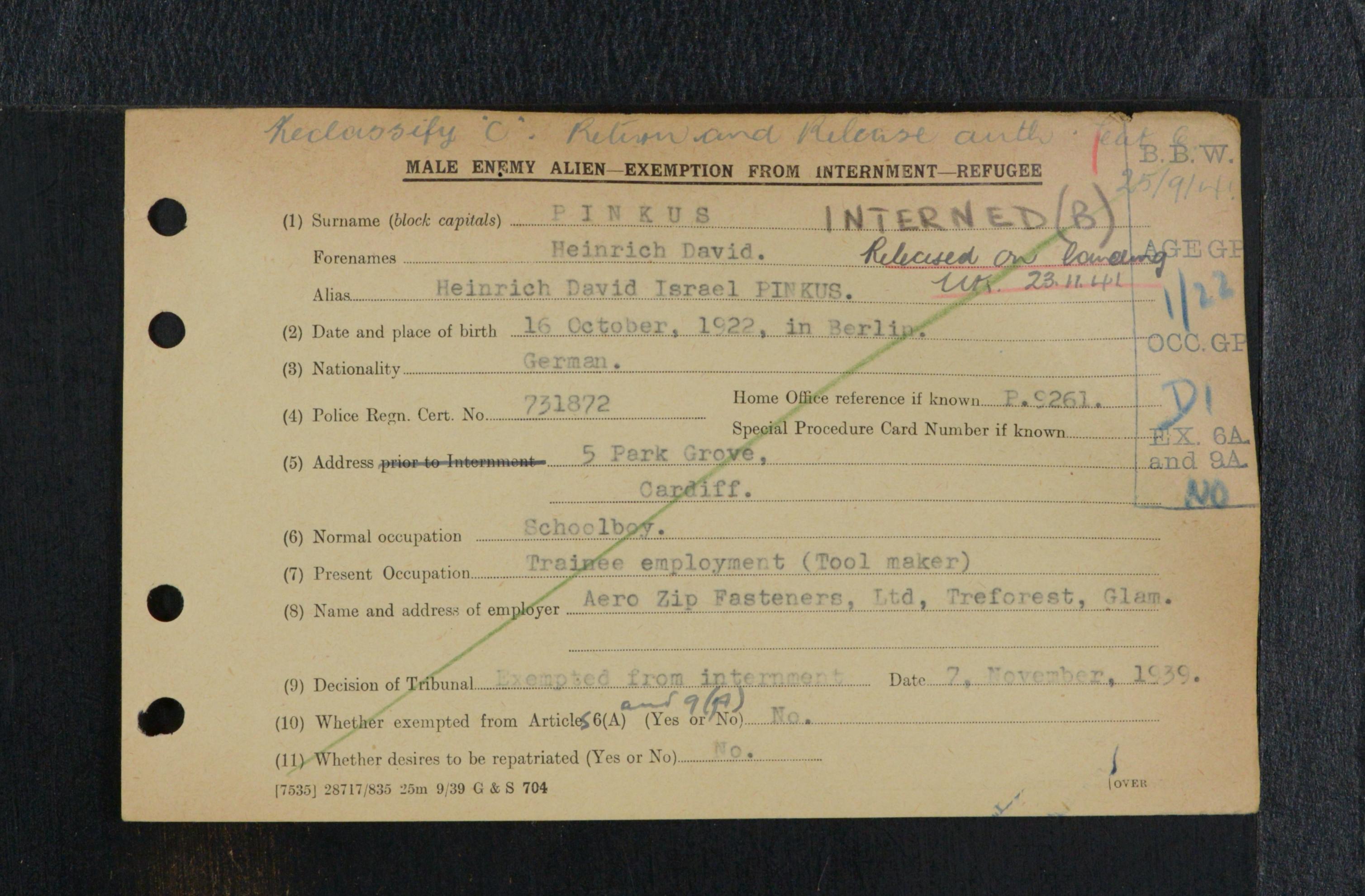Content can be downloaded for non-commercial purposes, such as for personal use or in educational resources.
For commercial purposes please contact the copyright holder directly.
Read more about the The Creative Archive Licence.
Description
This image is an Enemy Aliens and Internees card for Heinrich David Pinkus. As well as recording his personal details, the card has been annotated by hand to show his changing status as an interned and then released refugee.
Original document: The National Archives, Kew, London, England, HO 396 WW2 Internees (Aliens) Index Cards 1939-1947, Archive Reference: HO 396/135.
Heinrich Pinkus – a short biography.
Heinrich Pinkus was born in Berlin in 1922. His stepfather, Joachim Koppel, was a businessman who fled to Britain in 1938 and set up a factory at Treforest Trading Estate near Pontypridd. Heinrich and his younger sister Ilse followed soon afterwards and stayed with the rest of the family in Cardiff. In May 1940, both Heinrich and Ilse were interned as ‘enemy aliens’, and Heinrich was deported to Canada. Ilse was released in February 1941, while Heinrich came back to the UK and was released in November 1941. After the war, Heinrich changed his name to Henry Koppel and became chief engineer for Aero Zipp, the family business. His daughter Gaby, who grew up in Cardiff, now works as a journalist in London.
‘Enemy Aliens’.
After the outbreak of war in September 1939, all Germans and Austrians in Britain became ‘enemy aliens’ and had to register with the police. The Home Office set up internment tribunals throughout the country, to examine all ‘enemy aliens’ over the age of 16 and classify them as either Category A, B, or C:
- Category A, to be interned.
- Category B, to be exempt from internment but subject to the restrictions decreed by the Special Order.
- Category C, to be exempt from both internment and restrictions.
Although most remained at liberty, in the summer of 1940, restrictions tightened due to the risk of the German invasion, and tens of thousands were interned regardless of their classification.
The increase in numbers of those interned led to a serious space problem and, although most refugees were interned in camps in Britain, some were deported to other countries, notably Canada and Australia This was a dangerous trip during wartime. One ship (the Arandora Star) carrying over 1,600 people, several hundred of whom were German refugees, was torpedoed by a German submarine on its way to Canada in July 1940. Over 800 people drowned.
Sources.
- Centre for the Movement of People, Aberystwyth University, Oral history interview with Gabby Koppel (February 2022)
- Kershaw, Robert, Internment of enemy aliens in 1940: The fate of Italians resident in a Britain at war (2020) > [accessed 7 June 2022].
- Kershaw, Robert, Collar the lot! Britain’s policy of internment during the Second World War (2015)> [accessed 7 June 2022].






Do you have information to add to this item? Please leave a comment
Comments (0)
You must be logged in to leave a comment